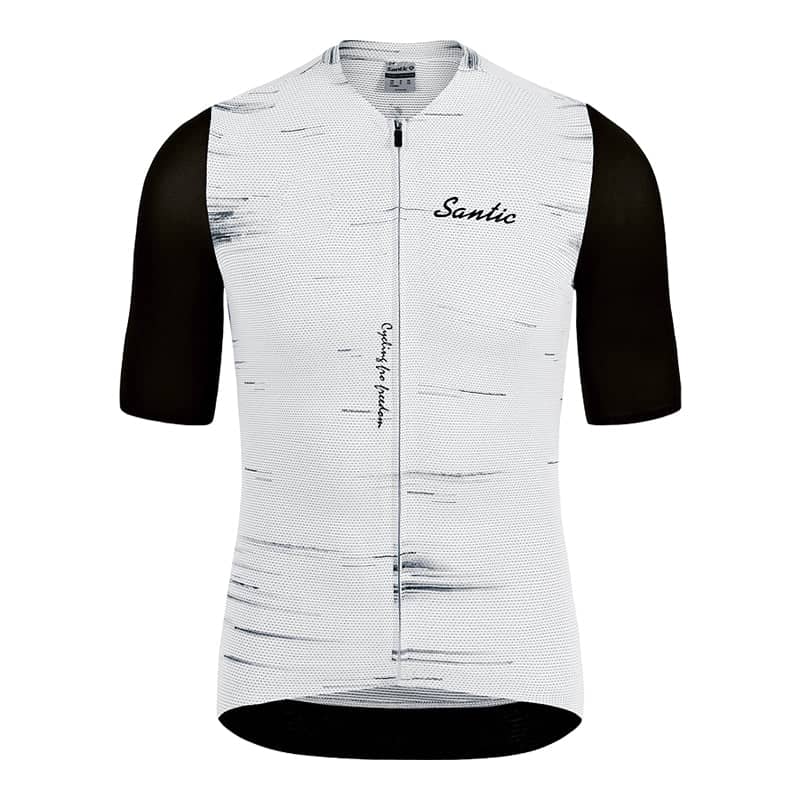Mastering Bike Maintenance: All You Need to Know
Keeping your bike in peak condition does not have to be complicated or expensive. With a few basic tools and some routine upkeep, you can handle most bike repairs yourself and save money while ensuring safety and performance. In this comprehensive guide, understand the tips and tricks for bike maintenance spanning from hanging a flat to adjusting brakes and derailleurs.
Importance of regular bike maintenance
Keeping your bike in top working order through regular maintenance is crucial for every cyclist. Though it may seem time-consuming or intimidating at first, learning basic bike maintenance skills will reward you with improved performance, safety, savings, and satisfaction.
Improved performance
One key importance of bike maintenance is enhanced performance. A dirty, stiff chain diminishes pedaling power transfer, wasting energy with each revolution. Grimy gear and brake cables add friction, impeding shifts and stopping power. Built-up grime on frame and components accelerates wear. Taking care of these issues through regular cleaning improves speed and handling.
Good durability
A well-maintained bike guarantees you a prolonged lifespan. Lubricating the chain prevents corrosion and lengthens its lifespan. Touching up paint chips helps prevent corrosion. Replace worn brake pads before they damage the wheel rim, which adds years to your wheels. Consistent repairs prevent small problems from escalating into costly component replacements. Proper care yields long service life from parts.
Increased safety
Most importantly, consistent maintenance boosts safety. Checking tire pressure and tread reduces flats or traction loss. Adjusting brakes ensures you can stop easily when needed. Tightening loose bolts prevents dangerous mechanical failures. A properly functioning bike prevents accidents and injuries.
While learning bike repair takes dedication, the principles are straightforward. With quality tools, a stand, degreaser and lube, and references at your disposal, you can handle fundamental tasks. Start with the ABC Quick Check before each ride.
Satisfaction in self-reliance
Learning to care for your bike provides a great sense of self-sufficiency and satisfaction. You need to rely on yourself rather than others for tune-ups and repairs. Overhauling components brings a better understanding of how each part functions. The ability to handle any mechanical issue breeds confidence in yourself and your bike.
Enhanced comfort
A smooth-running bike feels better to ride. Tuning up shifting allows seamless gear changes without clunking. Greasing bearings removes annoying creaks and play. Proper tire inflation provides cushioning from road vibration and impact. A quiet, finely-tuned bike is a pleasure to pedal mile after mile.
By spending 30 minutes per week tuning your bike, you’ll ride faster, stronger, and safer while saving money.

Essential tools for bike maintenance
Having the right tools on hand makes bike maintenance and repairs significantly easier. While fully outfitting a home workshop takes an investment, start with these essentials for handling the most common bike tune-ups and fixes.
Bike pumps
A good bike pump is the foundation. Tire pressure has an enormous impact on ride quality, handling, and preventing flats. Floor pumps allow you to inflate quickly to precise PSI readings. Mini pumps are stowed in bags for on-the-go inflation when needed. Invest in a quality pump with an accurate pressure gauge.
Hex Wrench
Hex wrench sets cover bolt sizes found on bicycles. Quality hex wrenches come in metric and SAE sizes and fit bolts snugly without rounding off edges. Multitools like the Park Tool MT-40 include 2, 2.5, 3, 4, and 8 mm hex sizes for everything from saddle adjustments to removing pedals.
An adjustable wrench or pliers can pinch-hit to turn nuts and bolts in a pinch. But for best results, it's wise to buy combination wrenches sized specifically for bike parts. The narrow head design reaches into tight spaces while minimizing rounded edges.
Bike lubes
Lubricants keep parts moving smoothly. Wet lubes work best in wet, muddy conditions. Dry lubes suit dusty environments. Apply the appropriate lube to the bike chain to reduce wear. Avoid WD-40, which removes grease and attracts dirt.
Bike-specific degreasers clean dirty drivetrain parts to prepare them for fresh chain lube. Spray-on formulas dissolve grit quickly without damaging paint or parts. Brush-on degreasers focus on specific components. Avoid kerosene or turpentine, which can damage rubber and plastic parts.
Bike chain tool
What a chain tool does is break and repair chains by pushing pins in and out of links. Master links make it easy to remove and reconnect a chain. But a chain tool becomes essential for removing stiff, damaged, or rusted links. Quality tools have a comfortable grip, sturdy pin, and compatibility with all chain types.
Stands
Bike stands to keep the bicycle secure and at an ergonomic working height for maintenance and repairs. Portable stands hold the bike up by the seat post or a removable front fork mounts. Professional work stands clamp securely in a tripod design while allowing the bike to spin into any position. A quality stand makes maintenance much easier on your back, too.
Bike torque wrench
Torque wrenches ensure bolts are tightened to the correct specifications. Too loose risks disengagement. When it is too tight, it risks thread damage. A preset torque wrench emits an audible click when reaching proper torque. Adjustable versions allow you to dial in the precise torque.
Tire levers
Tire levers are indispensable for removing and installing tires, especially tightly fitted tires. Durable plastic levers provide the right leverage and thickness to grip the bead without causing tube punctures. Carry a set on every ride to handle flats and swap tubeless tires.
With this essential toolkit on hand, you'll gain confidence in handling basic bike maintenance and repairs quickly, safely, and efficiently. Invest in quality tools made specifically for cycling for a long lifespan and optimum performance.

Routine and seasonal bike maintenance
Regular bike maintenance through the seasons will keep your wheels rolling smoothly for years. Follow proper routines to enhance performance, efficiency, safety, and longevity.
Tires are your bike's contact with the road. Inspect for cuts, bulges, or a crack in the sidewalls, indicating replacement is needed. Check treads depth and replace if worn. Ensure tires are inflated to the PSI on the sidewall. Use a pressure gauge for accuracy. Top off at least weekly, as under-inflation causes flats and sluggish handling. Learn to remove, repair, and reinstall inner tubes when punctures occur.
Lubricating your chain prevents wear and rust. Clean the chain periodically with a degreasing solvent. Wipe it down and allow it to dry fully. Then, apply bike-specific lube appropriate for the conditions. Re-lube every 1-2 weeks in dry weather, more often in wet or muddy riding. Check chain wear over time with a gauge. Replace at .5% elongation.
Inspect brake pads every few rides. If less than 2mm remains, replace them before they damage the rims. Adjust pad positioning if braking is weak or uneven. Check cables for fraying and replace them if needed. Hydraulic systems should be bled periodically for optimal power and modulation.
Keep shifting crisp by periodically adjusting derailleur limit screws and barrel adjusters. Lube shift cable ends to prevent sticking and fraying. Dirty jockey wheels on the rear derailleur hinder shifting - keep them clean and spin smoothly with bearing lube.
Prevent problems with regular cleaning. Hose off dirt and rinse with water, avoiding sensitive bearing areas. Apply fresh chain lube after cleaning. Touch up any chips in the frame paint. Wax the frame periodically for protection and shine.
Prepare bikes properly for storage. Deflate tires slightly and hang bikes to avoid flat spots. Lubricate the chain to inhibit rust. Remove and charge any batteries powering lights, computers, or electric assist systems. Store bikes somewhere clean, dry, and at room temperature to prevent component damage from moisture, heat, or cold.
Inspect the bottom bracket, headset, wheel bearings, and suspension pivots seasonally. Look for binding, play, or grinding issues. Regrease and adjust as needed, or replace damaged bearings. An overhaul keeps these moving parts operating smoothly for years.
With proper seasonal care, you'll ride trouble-free all year long. Consistent maintenance enhances safety, efficiency, and enjoyment while reducing costly repairs. Make bike care a rewarding habit.

Troubleshooting and common issues on the bike
Keeping your bike running involves learning to troubleshoot issues quickly. Isolate problems, then address the likely cause. Slipping gears usually means a stretched cable or poor derailleur adjustment. Try barrel adjuster tweaks first. Still slipping under load indicates a worn cable needing replacement and re-indexing. Stiff chain links also impede shifting.
Squealing brakes often signal worn pads, especially with poor braking power. Pads under 2mm require replacement. Check the brake quick release is cinched down. Align pads evenly and centrally on the rim.
Spin each wheel, checking for side-to-side deviation. Loosen the nipple pulling outward, and tighten near ones until the wheel runs straight. Leave truing to a shop if new to it.
Mystery clicks are annoying. Isolate, then inspect. Pedal clicks can be loose cleats or axles. Bottom bracket clicks indicate worn bearings. Check crank bolts. Headset clicks mean loose cups or bearings needing adjustment.
Rough pedaling may indicate bottom-bracket attention. Remove cranks, and check for play and twisting. Regrease and adjust bearing preload or replace cartridge. Inspect for cracks around the shell, too.
Tire flats plague every rider. Inspect inside for embedded debris. Run tubeless to prevent most punctures. Ensure rim tape fully covers spoke holes. Avoid underinflation and check treads and sidewalls.
Gearing issues stem from several causes. Check derailleur limit screws to prevent overshift. The bent hanger prevents smooth shifting. Stretched cables should be replaced if adjustments don't fix slipping.
Brake squeal, fade, or uneven power can mean contaminated pads or wet rims. Sanitize the pads with alcohol and sand surface. Replace worn pads for strong braking. Ensure pads contact the rim squarely.
Loose headsets feel dangerously wobbly. Adjust the stem cap bolt, top cap, or compression ring to remove play, and tighten stem bolts evenly. If looseness persists, replace worn bearings.
Stay rolling by methodically assessing and addressing issues. Carry tools and spares when riding. Learn maintenance skills and enjoy miles of trouble-free cycling.

FAQs
Here are 4 FAQs with responses related to mastering bike maintenance.
1. What are some basic bike maintenance tasks I should learn to do myself?
Several fundamental maintenance tasks are good for DIY learning. These include lubricating the chain, inflating tires, adjusting brakes and shifting, fixing flats, and cleaning or degreasing the bike. Start with the basics, like keeping tires inflated, chain lubed, and cables adjusted. Then, advance into wheel truing, brake pad changes, and bearing adjustments with practice.
2. How often should I be doing bike maintenance?
Ideally, some bike maintenance should be done before every ride. Quick tasks like a visual check, testing brakes, and ensuring proper tire pressure take little time. The chain should be cleaned and lubed every few rides to keep it running smoothly. Deep cleaning the whole bike every few months keeps everything operating in top shape. Replace consumable parts like brake pads, chains, and tires as they become worn.
3. What bike maintenance tools and supplies should I have on hand?
Start with a good bike pump, tire levers, spare tubes, hex wrenches, lubricants, degreaser, rags, brushes, and bicycle-specific tools like chain tools and cable cutters. Also helpful are stands, torque wrenches, cone wrenches, spoke wrenches, and advanced tools as your experience grows. Invest in pro brands designed specifically for bike repair.
4. When should I take my bike to a shop versus DIY maintenance?
With practice, you can do most routine maintenance like tuning, cleaning, minor adjustments, and part swaps yourself. Bike shop repairs make sense for complex part installation or removal, major drivetrain overhauls, wheel truing, brake bleeds, suspension service, and tricky diagnosed issues. Build your skillset up gradually. Seek professional help anytime you feel unsure about tackling a bike repair at home.
Conclusion
Whether you are a seasoned enthusiast or just getting started, mastering bike maintenance will serve every rider well. With practice, the proper tools, and an orderly approach, you can become self-sufficient in caring for your bicycle. While advanced repairs may still require a bike shop now and then, you will gain the ability to handle most tasks yourself.
Related Articles
【Best Bike Tool Kits】
https://santic.com/blogs/extra/best-bike-tool-kits
【How to Clean A Mountain Bike】
https://santic.com/blogs/extra/mountain-bike-clean


